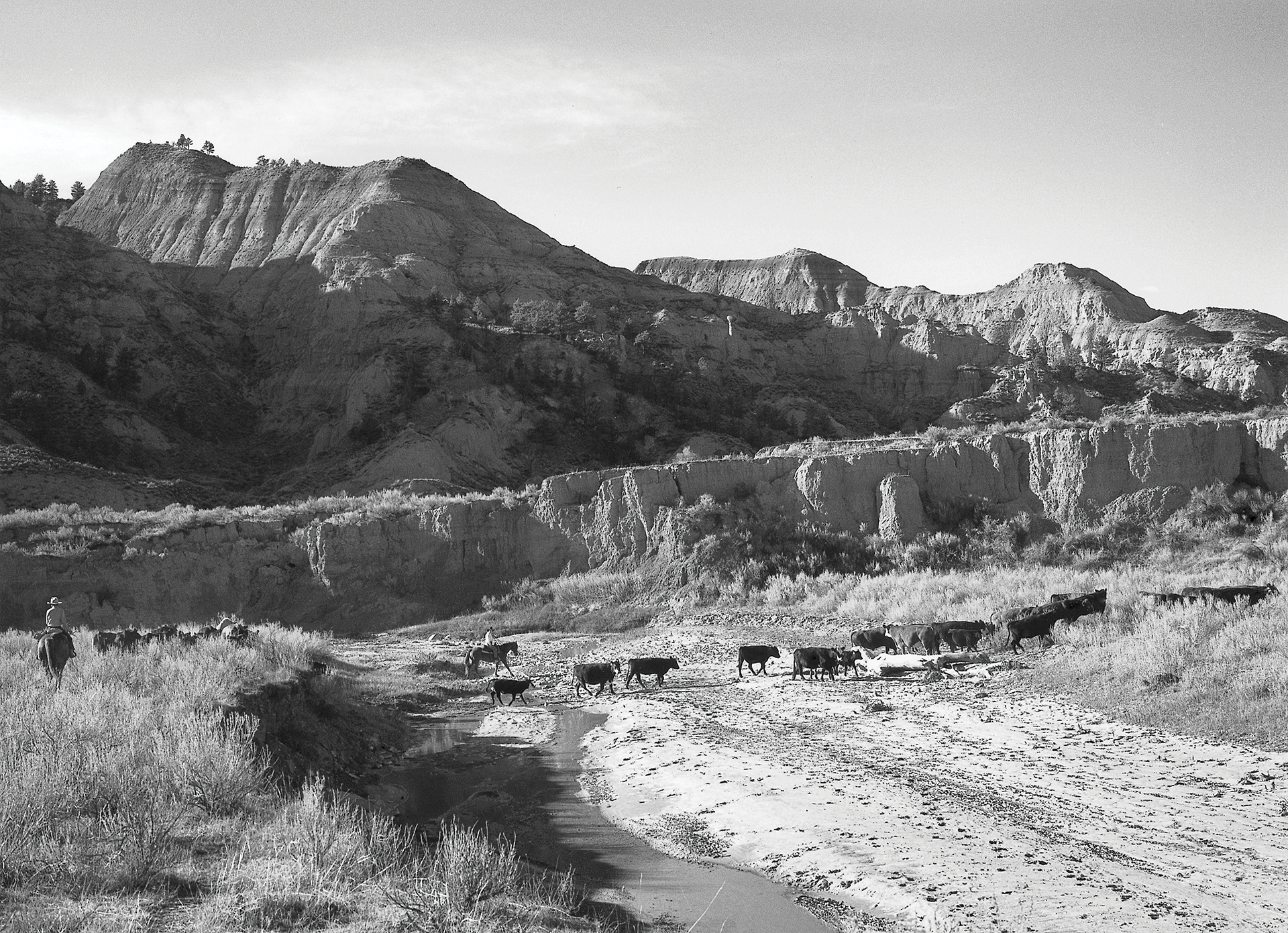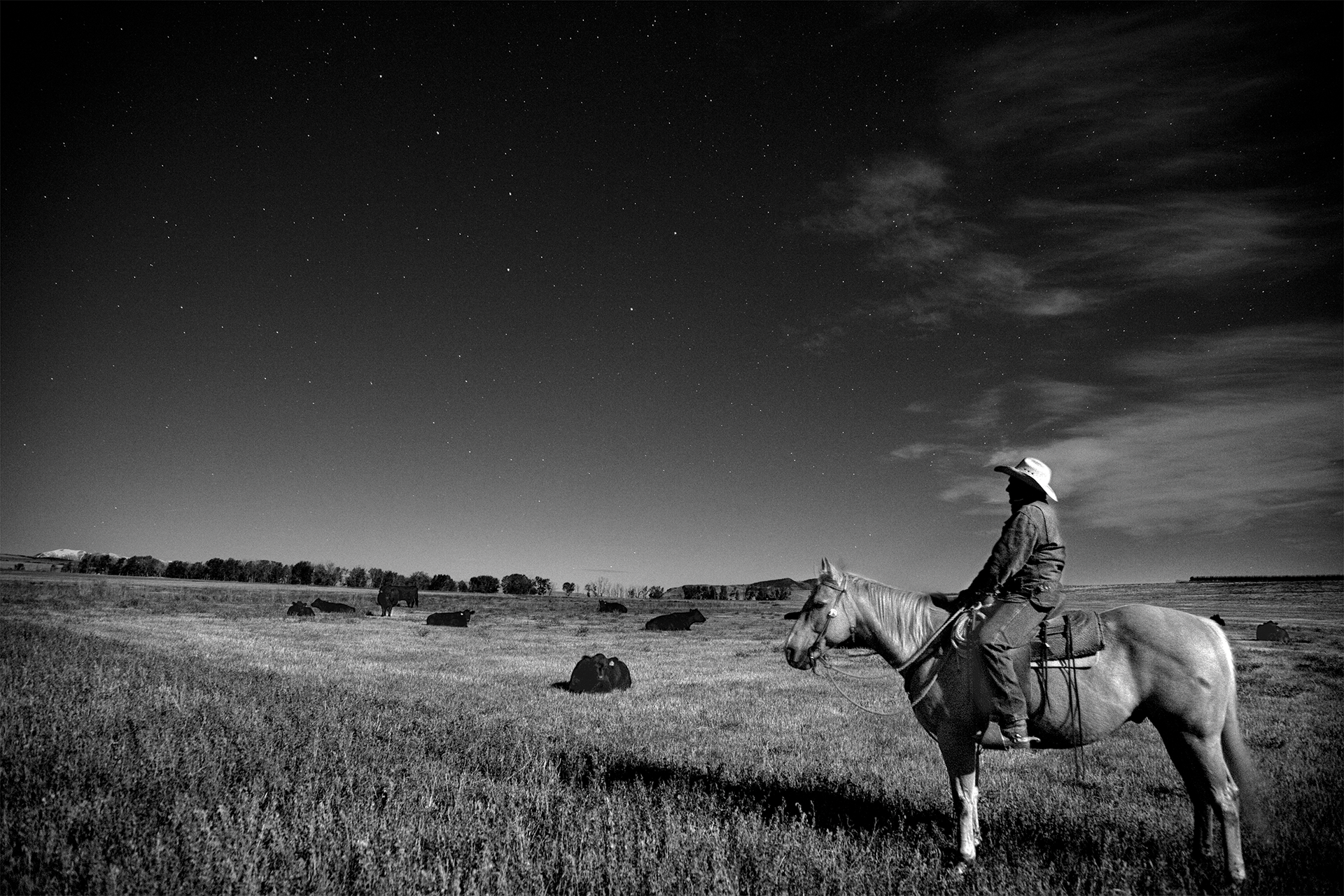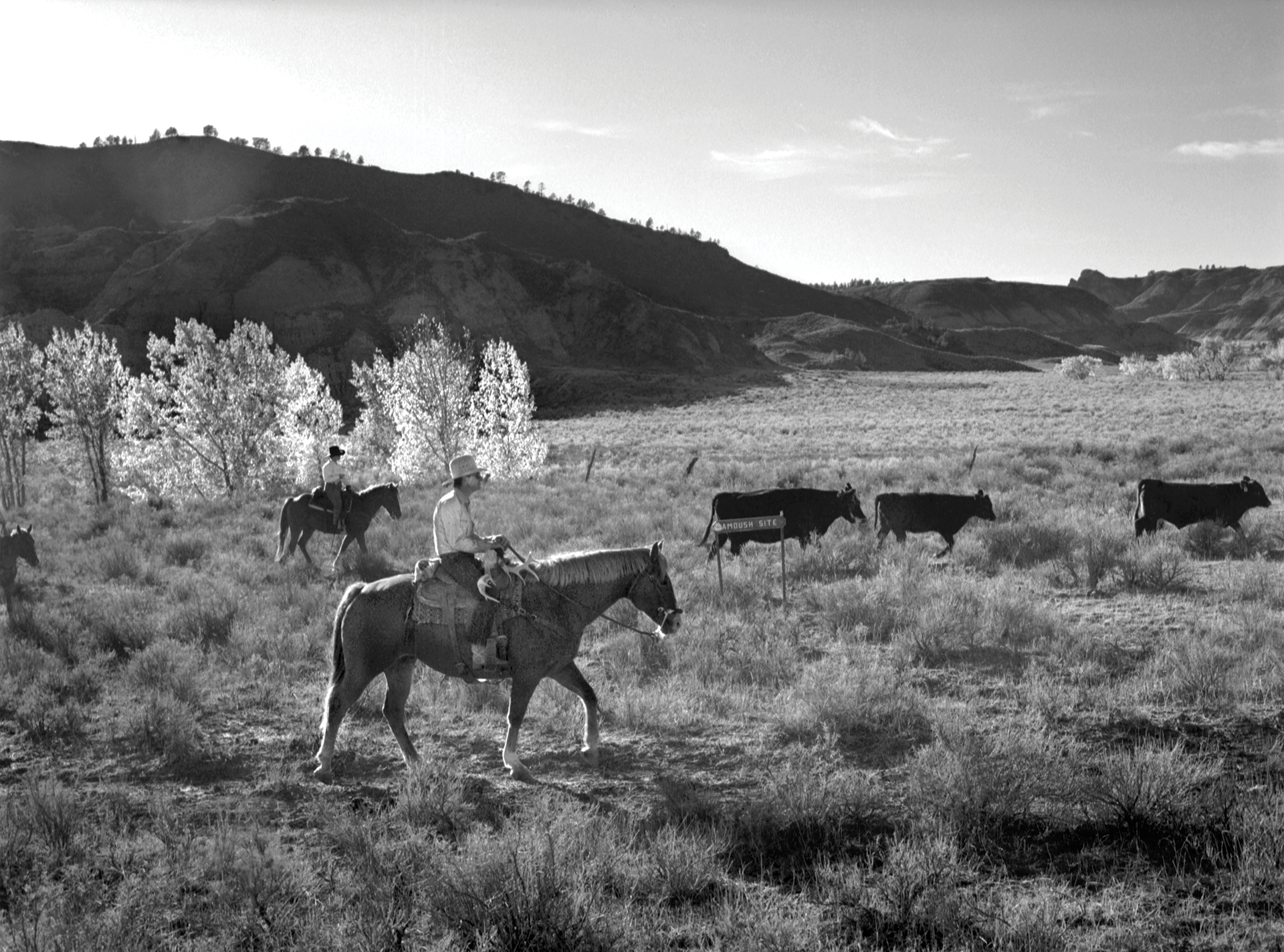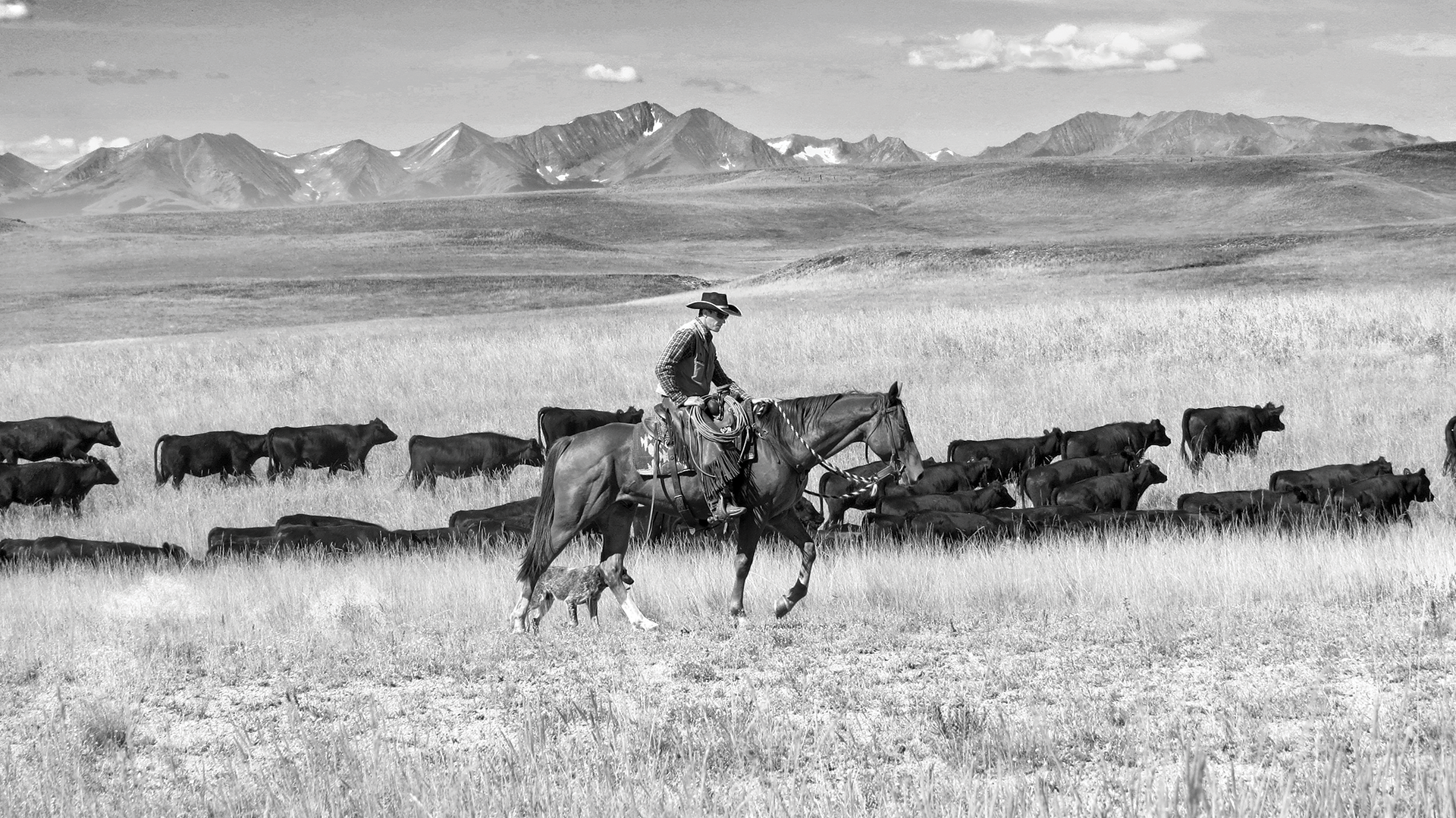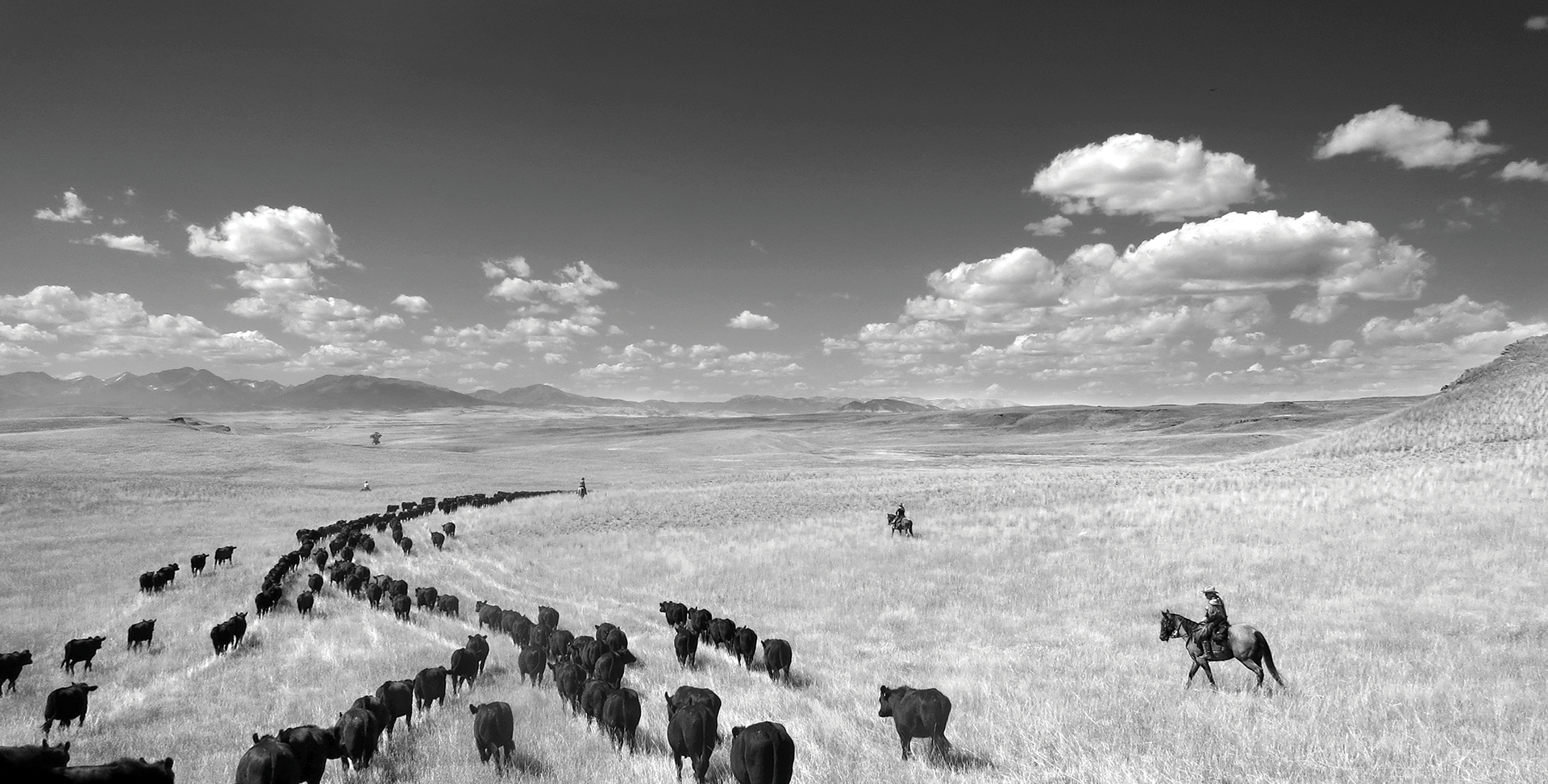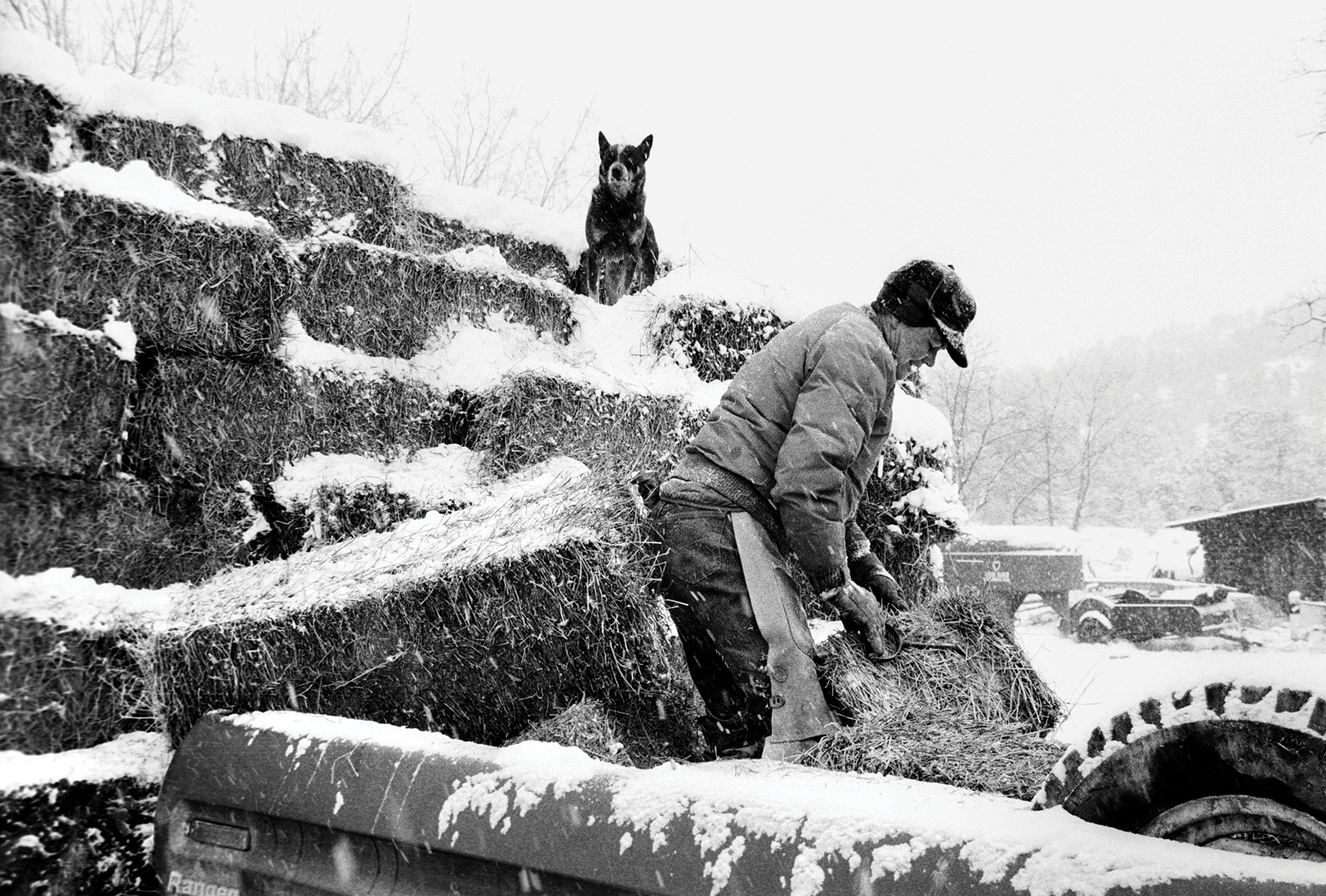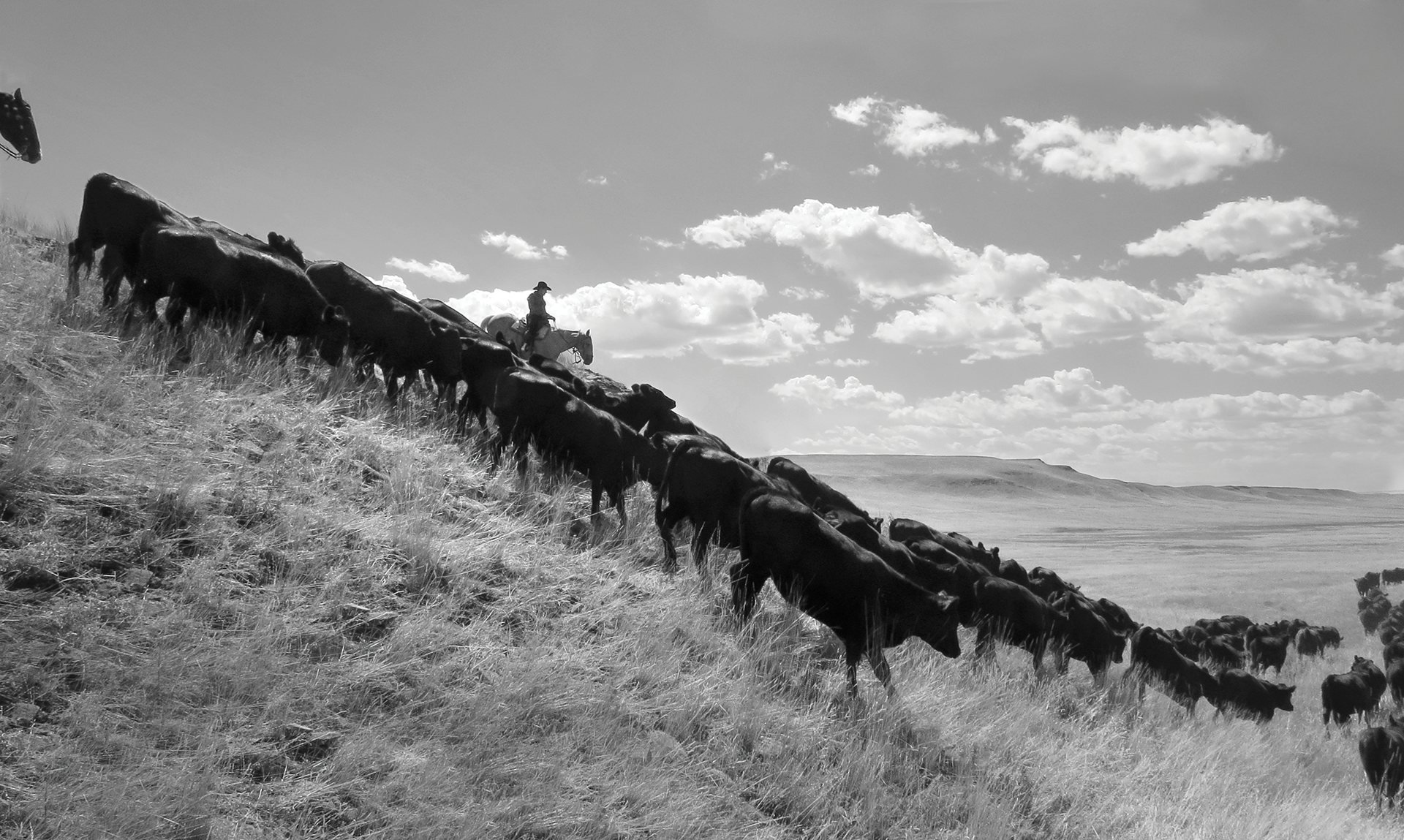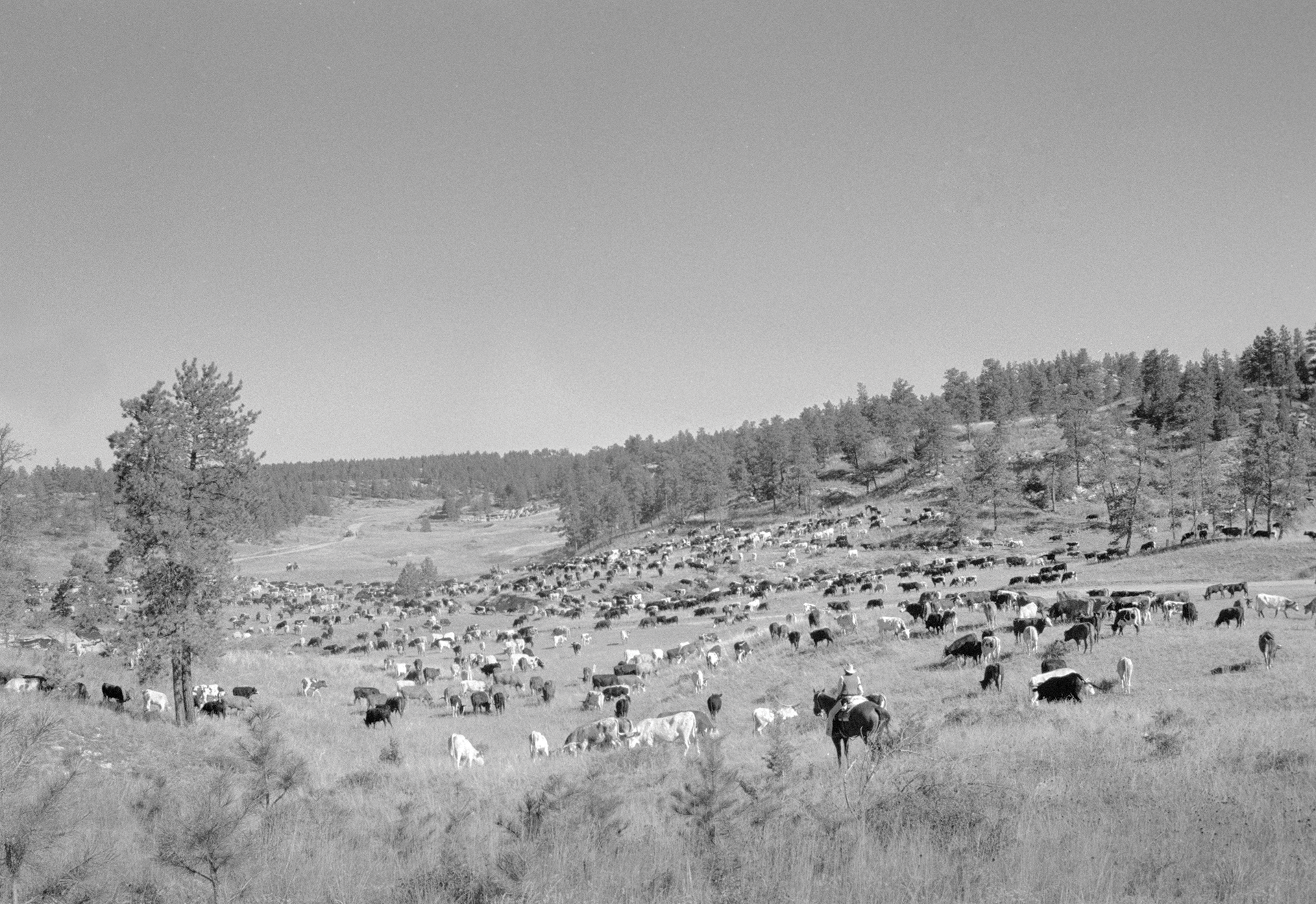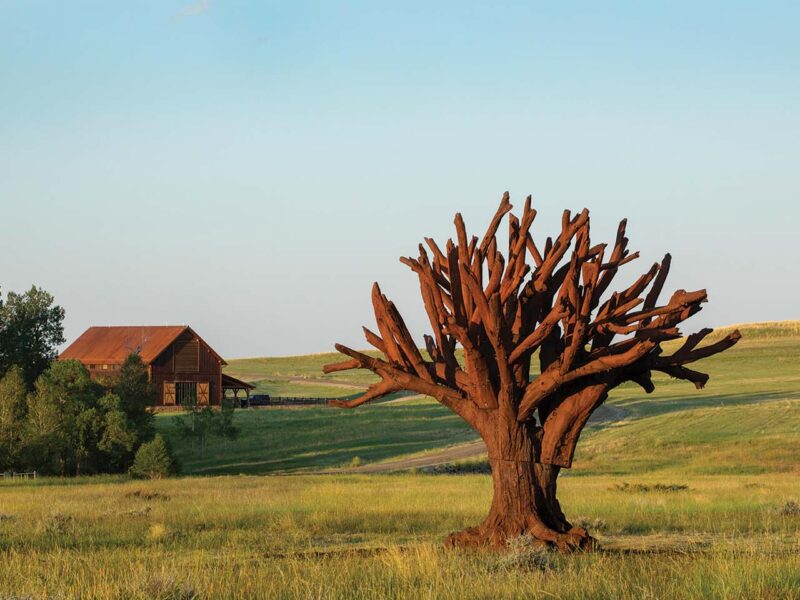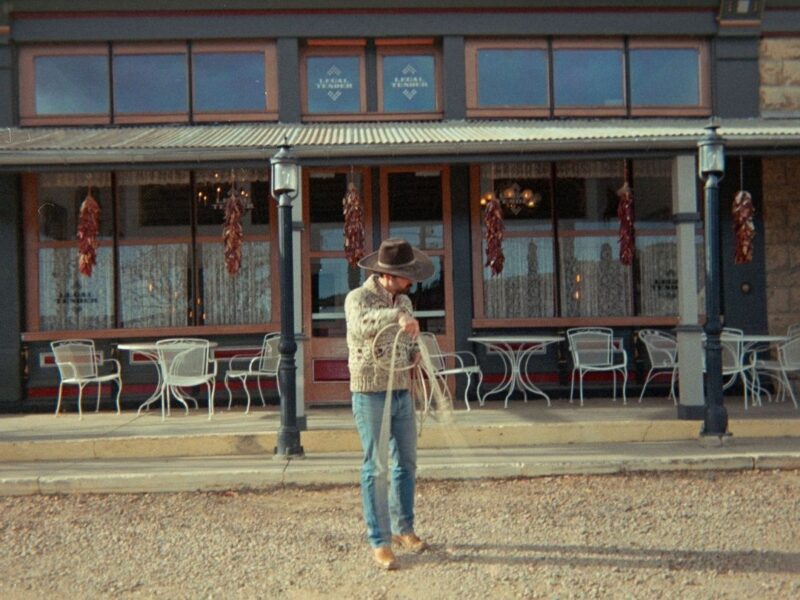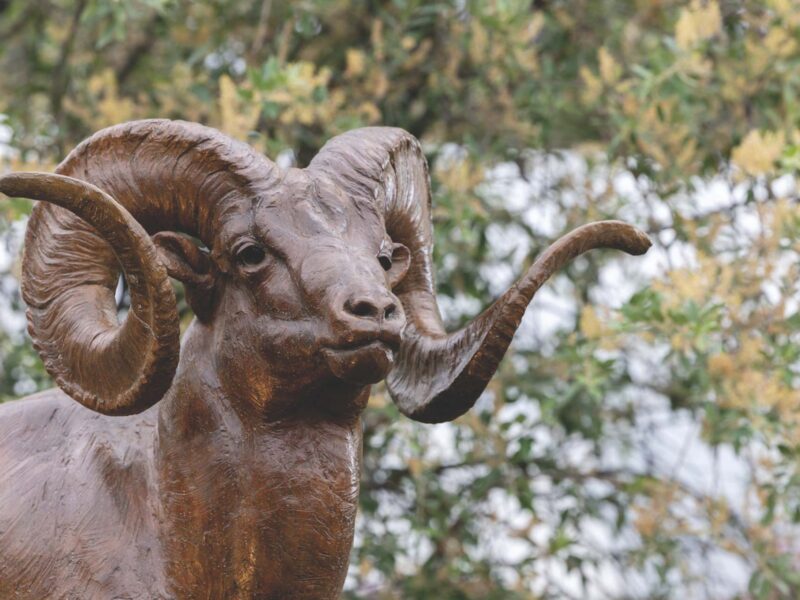Oh sis, would you look at those clouds!
Legendary western photographer Barbara Van Cleve reflects on how wonderful it was to be raised on a ranch.
Interview conducted in March 2024 by Kelly Bennett and Carolyn Quan.
Kelly Bennett and Carolyn Quan: Before we dig into your history and art, would you mind sharing what interested you in participating in this interview?
Barbara Van Cleve: Well, simply said, I love ranching, and I so deeply wish to share my love of ranching and of the working ranches that remain operating in the West. It is a love that started in my early childhood and has stayed with me throughout my life. I’m 89, and I plan to live many more years and share my love of ranching until I’m gone. I believe that growing up on a ranch offers the best childhood and most rewarding life that a person can live. It provides a person with purpose, with an understanding of hard work, and with a freedom and unique sense of personal meaning.
KBCQ: Your family has such a rich history in Montana. What was life like growing up on one of Montana’s historic ranches at the base of the Crazy Mountains?
BVC: It was a rural ranch life. I understood from an early age that ranching was a family legacy. My great-great- grandparents came from back East, like everybody else. Montana was a raw territory at the time, not yet a state, and they set up base in 1842 near what is now Billings, but it was called Coulson City in those days. My great-grandfather worked for the railroad and bought a property from an old rancher. It took a while, but eventually he and his wife, who started a finishing school in Coulson City, bought the cattle operation and the Lazy K Bar brand and built a new house. That became the base of the operation. It burned to the ground before my father was born in an unfortunate incident involving an acetylene lamp and a cigarette, but they rebuilt it.
We started guest ranching in addition to the cattle back in 1922, before I was born. It turned out to be a wonderful thing back then because most guests were wealthy people with wonderful names who were very unimpressed by themselves. It’s a big contrast to today, when many guests are deeply impressed with themselves and don’t know or care to know how to camp and be rugged or ride horseback for a real distance—they can’t really experience ranch life and the legacy of the West.
I grew up going to class once a week in a little two-room schoolhouse that I rode my horse to. We had great literature in our home and parents who encouraged us. My mother was a specialist at math, and my father spent time at Harvard but returned to the ranch before graduating. Early on, I remember that I wanted to find a way to communicate how wonderful it was to be raised on a ranch, to learn how to work. You would do the work because you knew it was to help your family survive and continue ranching. It prevented you being led astray by little dolls and fantasy.
Early on, I remember that I wanted to find a way to communicate
Barbara Van Cleve
how wonderful it was to be raised on a ranch, to learn how to work.
KBCQ: With all that work, how did art enter your life?
BvC: Artistically, I couldn’t draw and I couldn’t paint, but we got Life magazine and I was captivated by the photo essays. I pored over the black and white photography. I remember a wonderful exposé on a nurse in Kentucky who was a midwife. And then there was Dorothea Lang, who did an incredible series on the construction of the dam in Fort Peck, Montana. I was mesmerized by these photo essays, and I thought, ‘I don’t need paintbrushes; I just need a camera!’ So at age 11, I begged my parents for a camera and that Christmas, they gave me a Brownie Box Junior Camera, and I carried that thing everywhere on the ranch with me.
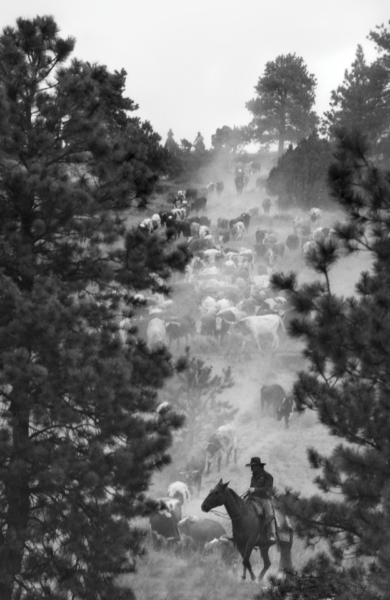
There were no courses in photography available at that time, so I would pick up books from the library that would teach me how to ‘see.’ I learned how to construct an image, which became all important to me, and I worked like a nailer on it. I had to take my film to Big Timber and have it developed at Cole Drug. I worked out a deal with my dad, where I would do odd jobs, like taking down an old sheep shed, to earn money to develop my film. When I went to high school, I got on the yearbook committee so I could use the darkroom.
My dad was a big help. We’d go out and he’d say, ‘Oh Sis, would you look at those clouds? What do you see there?’ We’d look at the clouds primarily for the weather, but we’d always make time for a little imagination amid the work. I vividly remember stacked, cut oats, pulled together in bundles that looked like teepees. It was really something to see in the late afternoon or early moonrise. My dad taught me to be imaginative when I would see things like that on the ranch.
KBCQ: What do you convey in your photography? What drives you to put together the images you shoot, and what has kept you at it all these years?
BVC: I think everybody desires art at some level because it feeds the soul of the person. It’s intellectual to some extent, but it is also highly emotional. Some people are born with a desire for art; other people cultivate it. I spent a lot of years as a teacher because my parents both said, ‘There’s no way a woman can make a living as a photographer.’ Well, yes there is, if you have enough perseverance and you’re bullheaded enough to keep at it. Eventually I sure did. It made me better at my art, and I never gave up my life of ranching.
What I try to do in my photography is expose people to real ranching. There are too many photographers from the big cities who think they are going to open people’s eyes when they photograph ‘ranch women.’ Well, you don’t have women ranchers wearing tight jeans and blouses, riding long behind a herd with their hair blowing in the wind. These gals rope, brand, ear mark, castrate, the whole deal, and that’s what people should see. It’s got to be photographed in a way that the viewer picks up my emotion about the activity.
KBCQ: How do you capture that emotion, and who do you take these photos for?
BVC: I don’t know—I think it’s just that I care so much about it. I try to construct my images so that they will pull the viewer in. I know I’m successful when people say, ‘I got the feeling that I think you had when you took that.’ Hearing that pleases me so.
Initially, my photos are for me. I’m pulling these pictures together and communicating the beauty and feeling of ranching to the outside world. It’s about showing the work and feelings of success in keeping a family ranch going. I really believe there is so much about ranching that needs to be communicated: You know how to have a family, how to involve your children. You know that you are part of the community, and you have certain responsibilities to it, and you do them. You come together for brandings; the ladies put together potluck lunches; it’s a wonderful gathering. Then there is the beer time after you finish the work. It’s simply a wonderful feeling, and the people take care of their families, each other and the land.
These gals rope, brand, ear mark, castrate, the whole deal, and that’s what people should see.
Barbara Van Cleve
KBCQ: What is the most memorable photo that you have taken?
BVC: The earliest picture I took that made me realize I could be a photographer—it’s called Ground Blizzard. I’ve never found the negative because I stored them in shoeboxes back then. I was around 14 or 15 and out on a hunting trip with my dad, and we camped in a beautiful meadow. We woke up to about a foot of snow, and Dad was thrilled because it would make for good hunting, since we could track everything. I made a quick breakfast of eggs and coffee, and he got the horses ready to go. Just as we set out, the wind changed, and we got a true ground blizzard, which ruined everything for hunting because of all the drifting snow. As we got set to go home, I saw the wind obscuring willows and blowing the horses’ tails. They stood with their backs to the wind, and I could see the snow drifting; it was wonderful. I convinced my dad to wait so I could snap a picture, and I took out my Brownie Box camera and ran off to get the shot. I made it in one shot because I had to pay to have my film developed, and it took a lot of odd jobs to afford it. I took the photo, got back on my horse, and when I got it developed, I knew I could be a photographer.
KBCQ: You have seen so much change in your life. How has the changing West affected your art?
BVC: When my mother was still alive, she would always grumble about change. I got her a card that said ‘Change…’ on the front. Inside, it read, ‘…don’t you just hate it?’ After she died, I found the card in an envelope with my name on it. Under the tagline inside, she’d written, ‘Now, I think you understand this,’ and she was right. I do like some things about change—I’m a great lover of Photoshop—but changes in ranching are hard for me. It drives me nuts when people use those damn ATVs or motorcycles to gather horses and cattle.
Another change was our ranch shrinking. My youngest sister and only brother died, and unbeknownst to me, had negotiated the sale of the guest ranch part of our operation. As they passed, I didn’t have the heart to object, so I agreed to the sale. I moved to a property I’d previously bought from my grandfather. It is a wonderful place, but it was different—it wasn’t my family’s ranch. I loved that land, and I loved hosting guests that wanted to learn about ranching and being involved on the landscape. My world changed, and I’ve never liked change since then, except for Photoshop, of course.
Today, there is a romanticized John Wayne concept of the West, not an understanding of it. People want to buy big chunks of land, and when they get tired of having it, they want their money back, and lots of it. They divide their land up and sell it in pieces, and the landscape is gone forever. This change makes it more important to communicate the beauty and difficult realities of ranching in my art.
People want to buy big chunks of land, and when they get tired of having it, they want their money back, and lots of it. They divide their land up and sell it in pieces, and the landscape is gone forever.
Barbara Van Cleve
KBCQ: What is your message to a young person growing up on a ranch today?
BVC: Sadly, I think it’s hard to imagine any young person could go into ranching, unless they are born on a ranch and the family doesn’t want to sell it. It so often happens that someone in the family wants out of ranching, wants their money out of the place and forces the sale of property. People go into the poor house fighting these kinds of sales—and it’s a tragedy. I would tell young people on ranches to talk to their siblings and work out an equitable relationship to help keep the ranch in the family.
Money is here today and gone tomorrow. Land goes on forever, but if you ever sell it, you’ll never get it back. We must preserve it, honor it and cultivate it. Keeping our working lands intact, preserving ranching communities and leaving a legacy of land and open landscapes needs to be better honored. We must preserve these places that seem to be going away so quickly.


